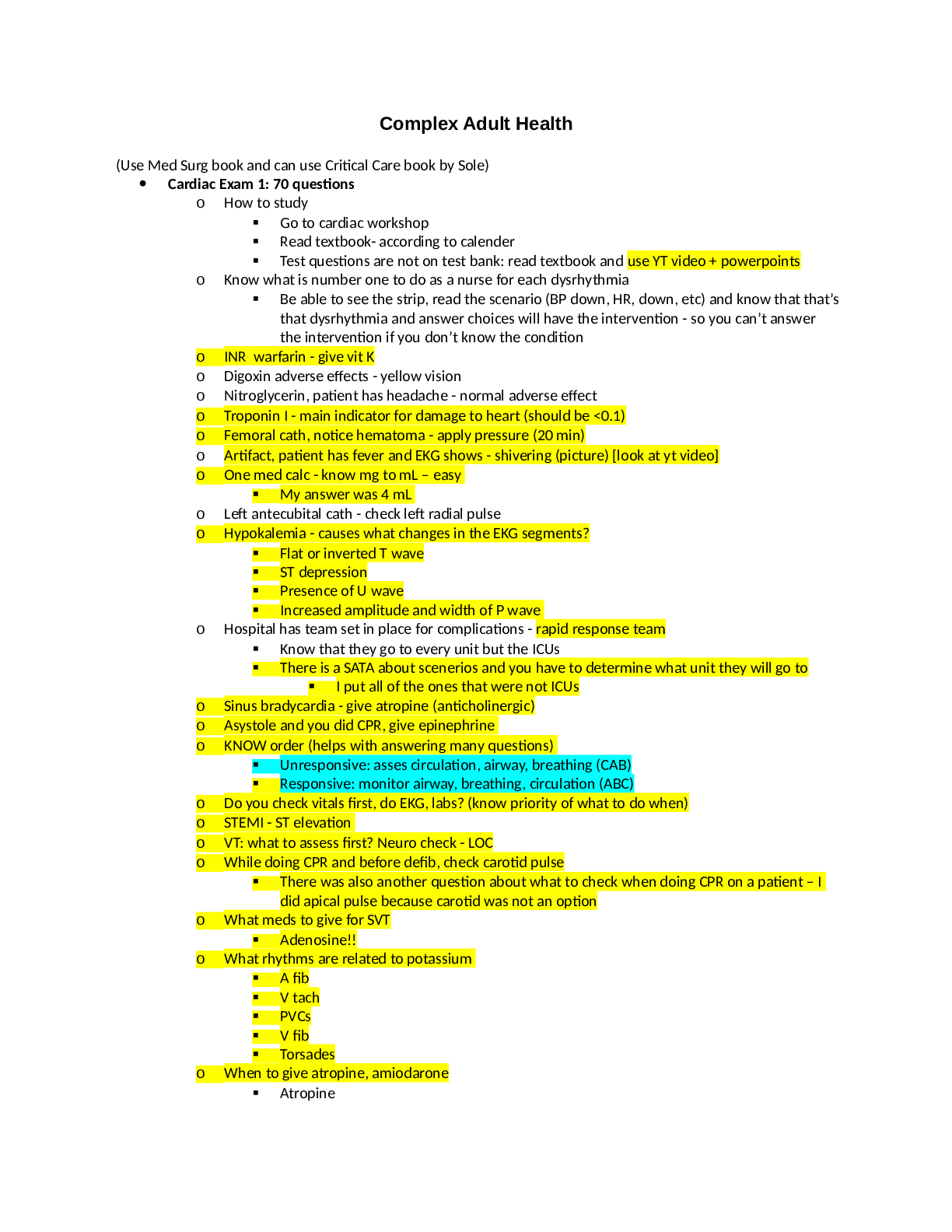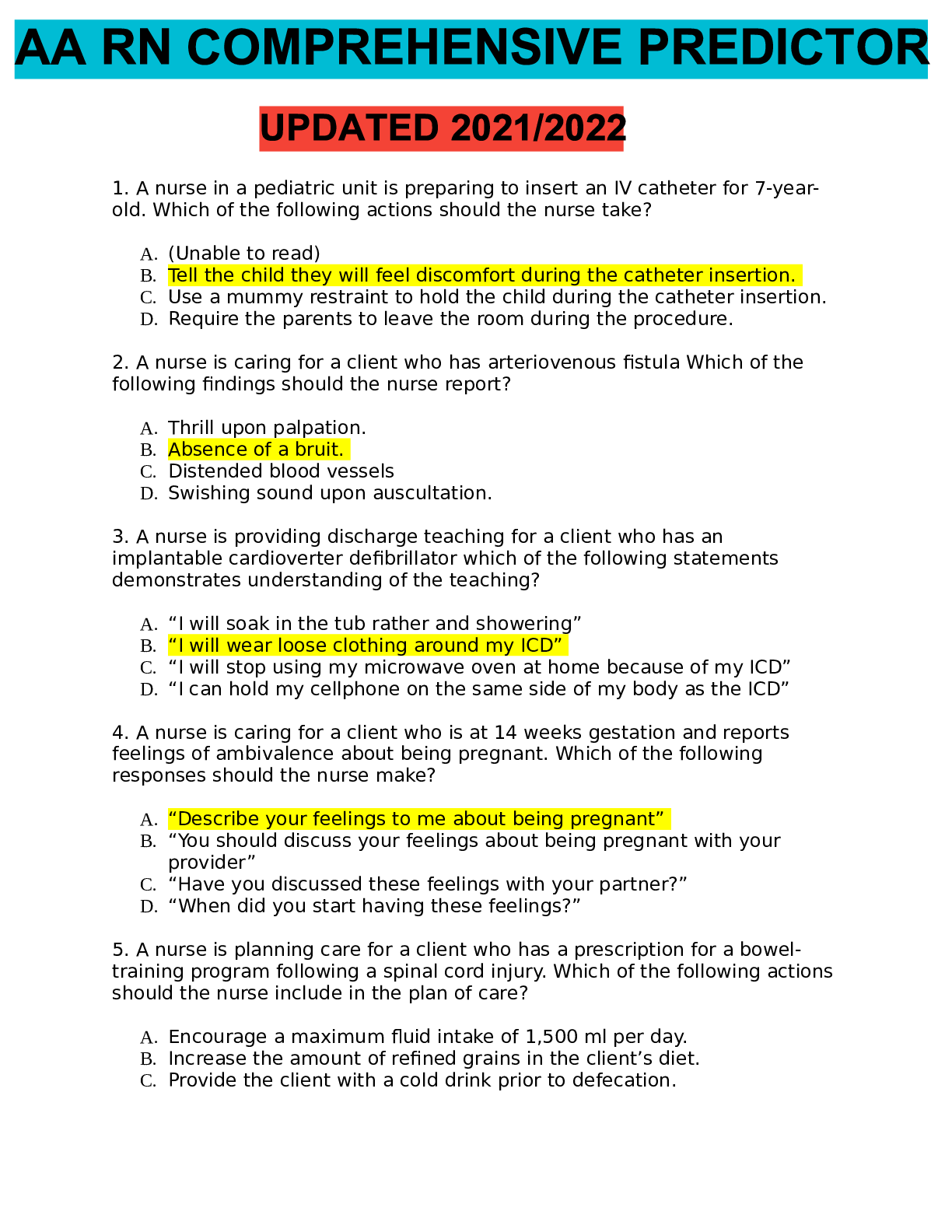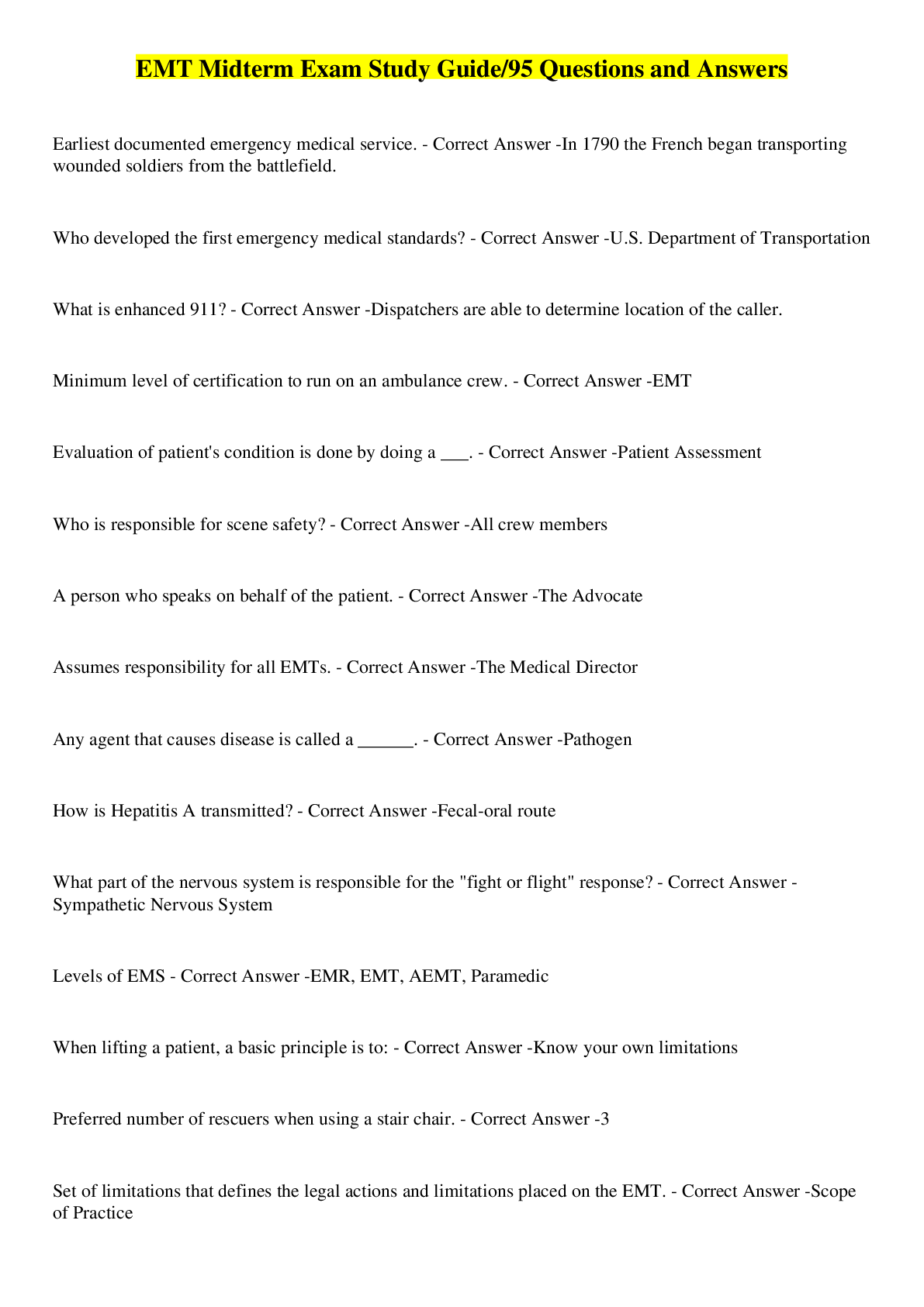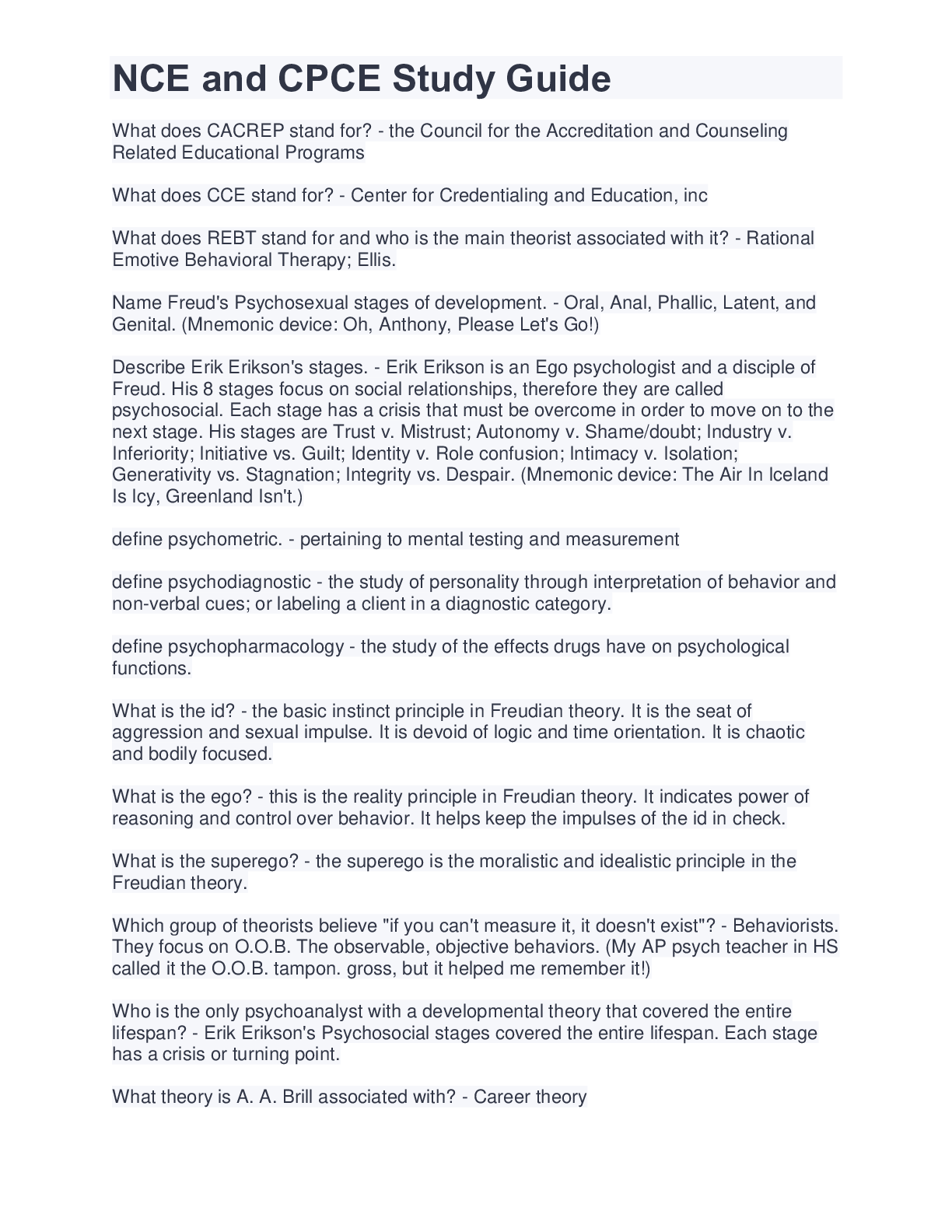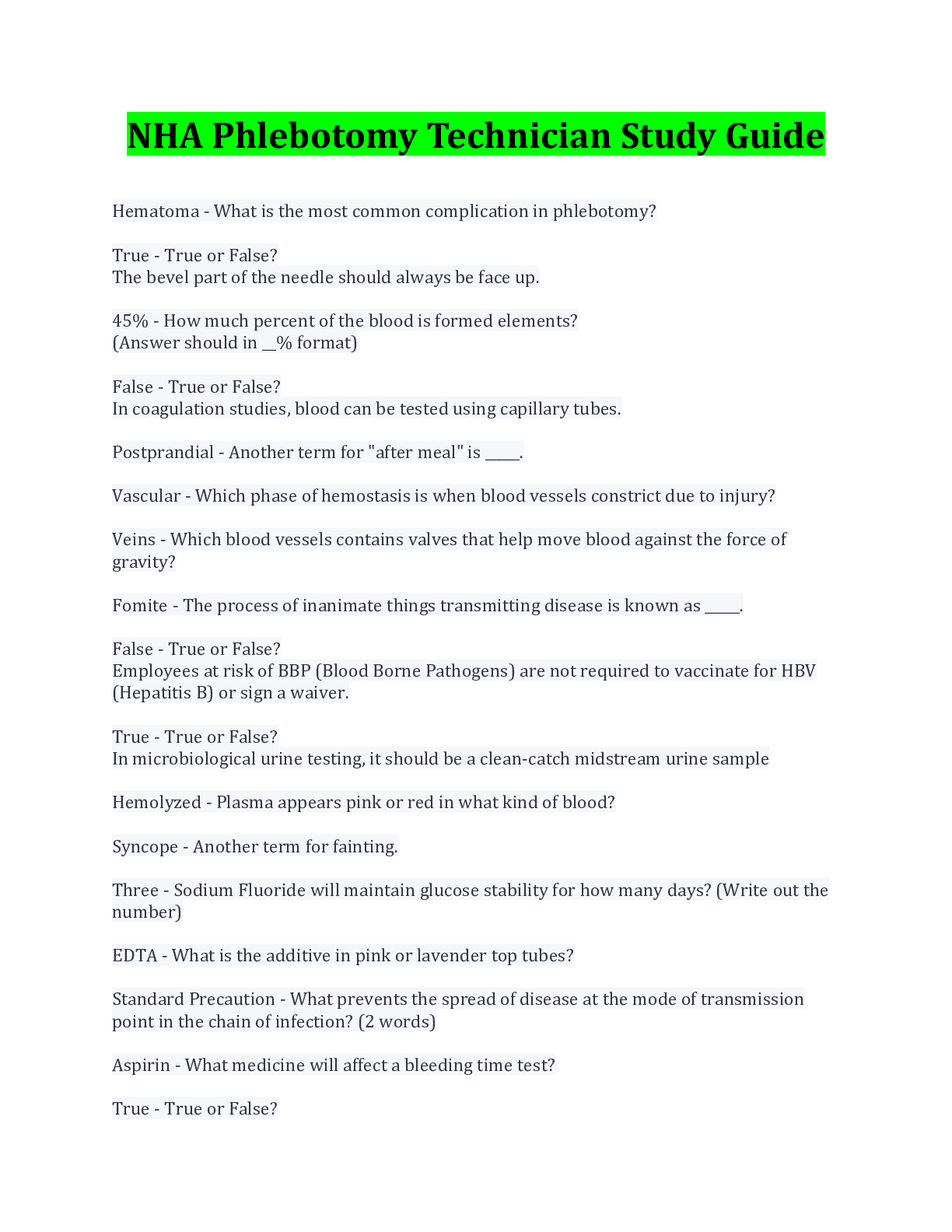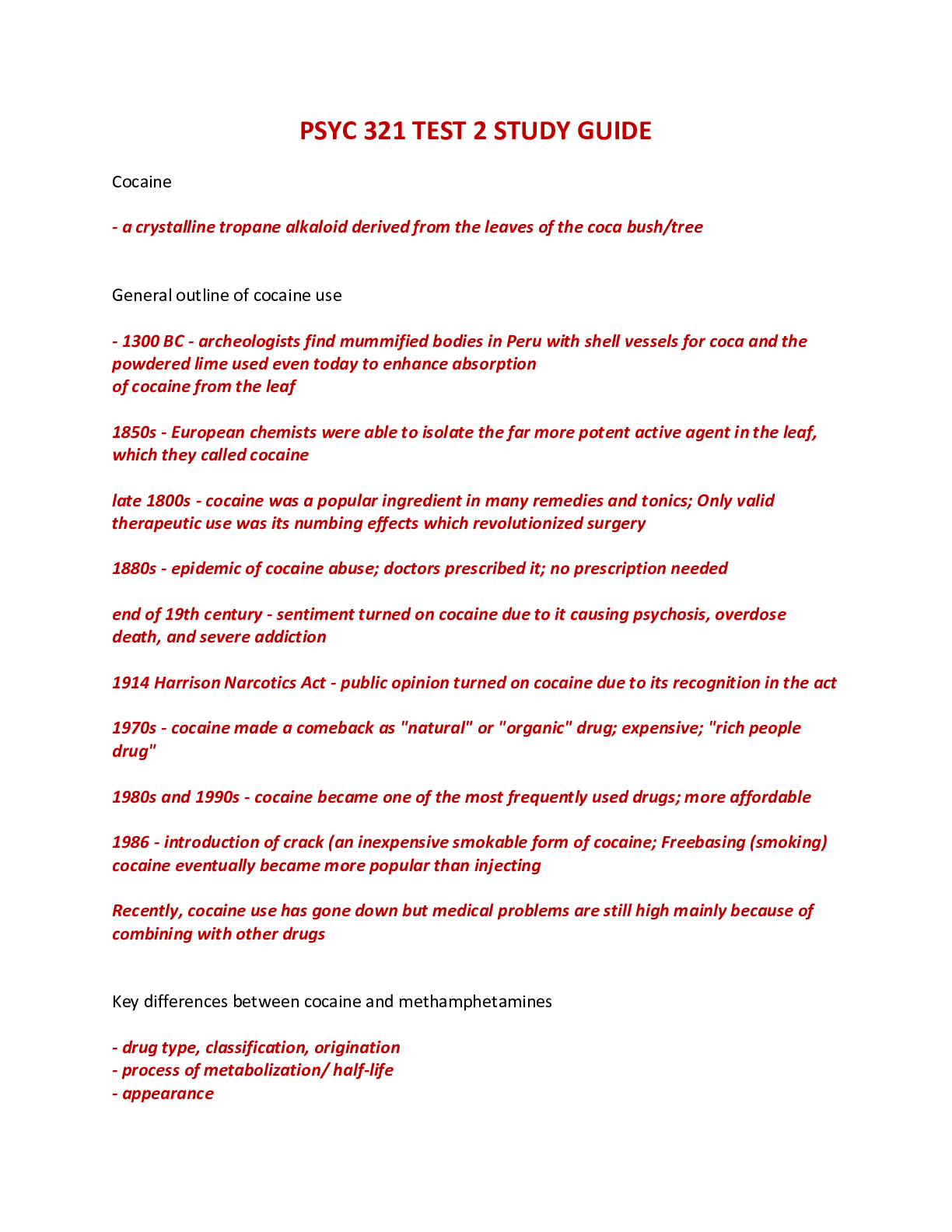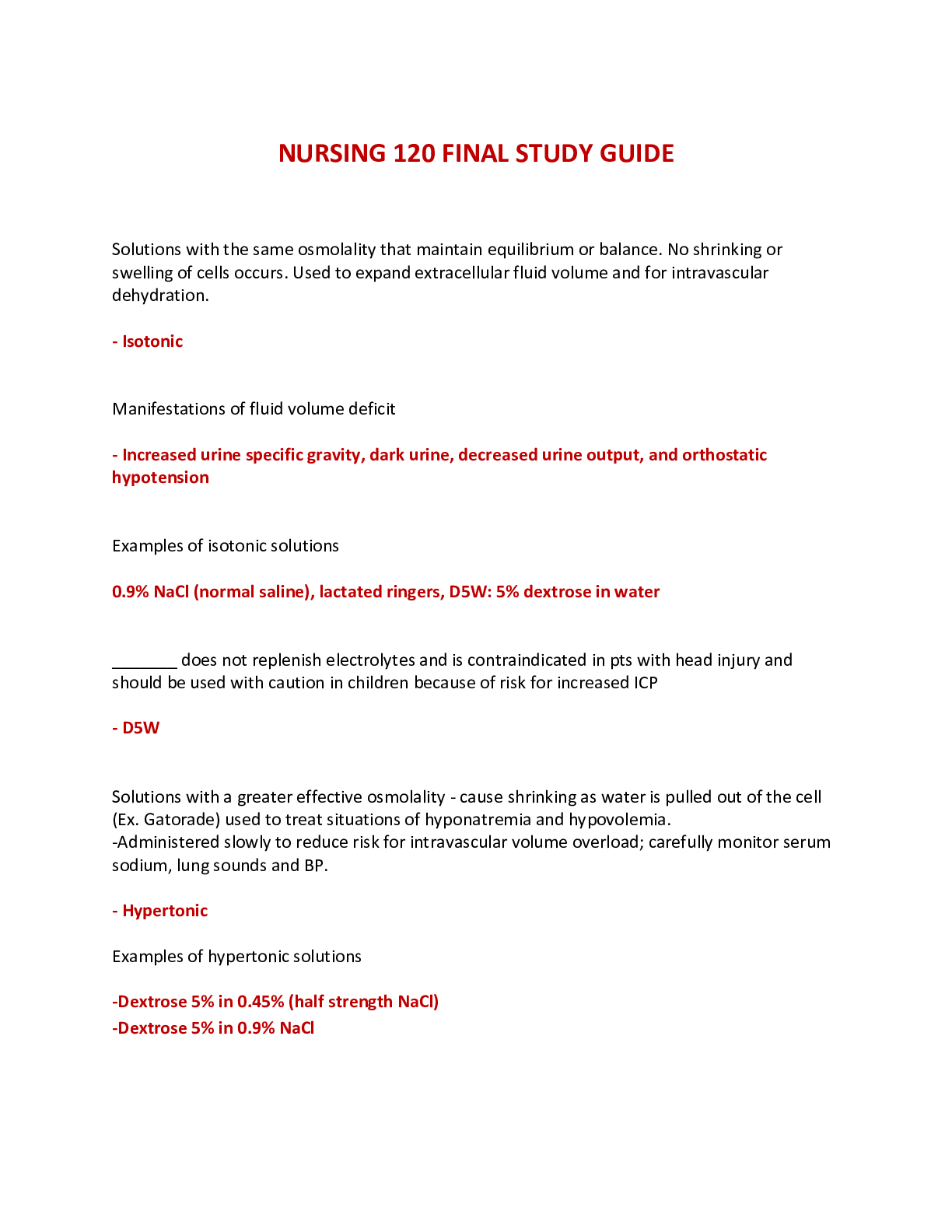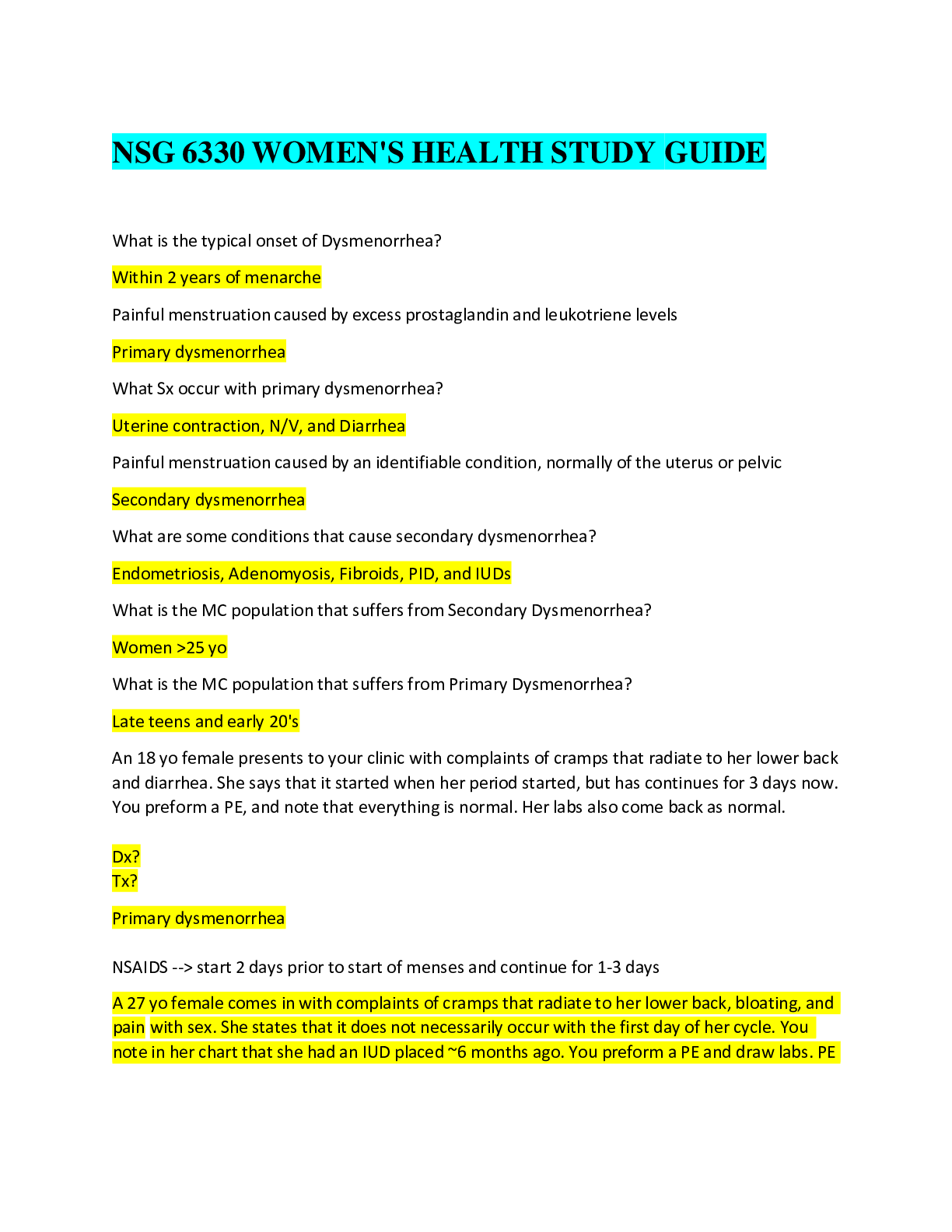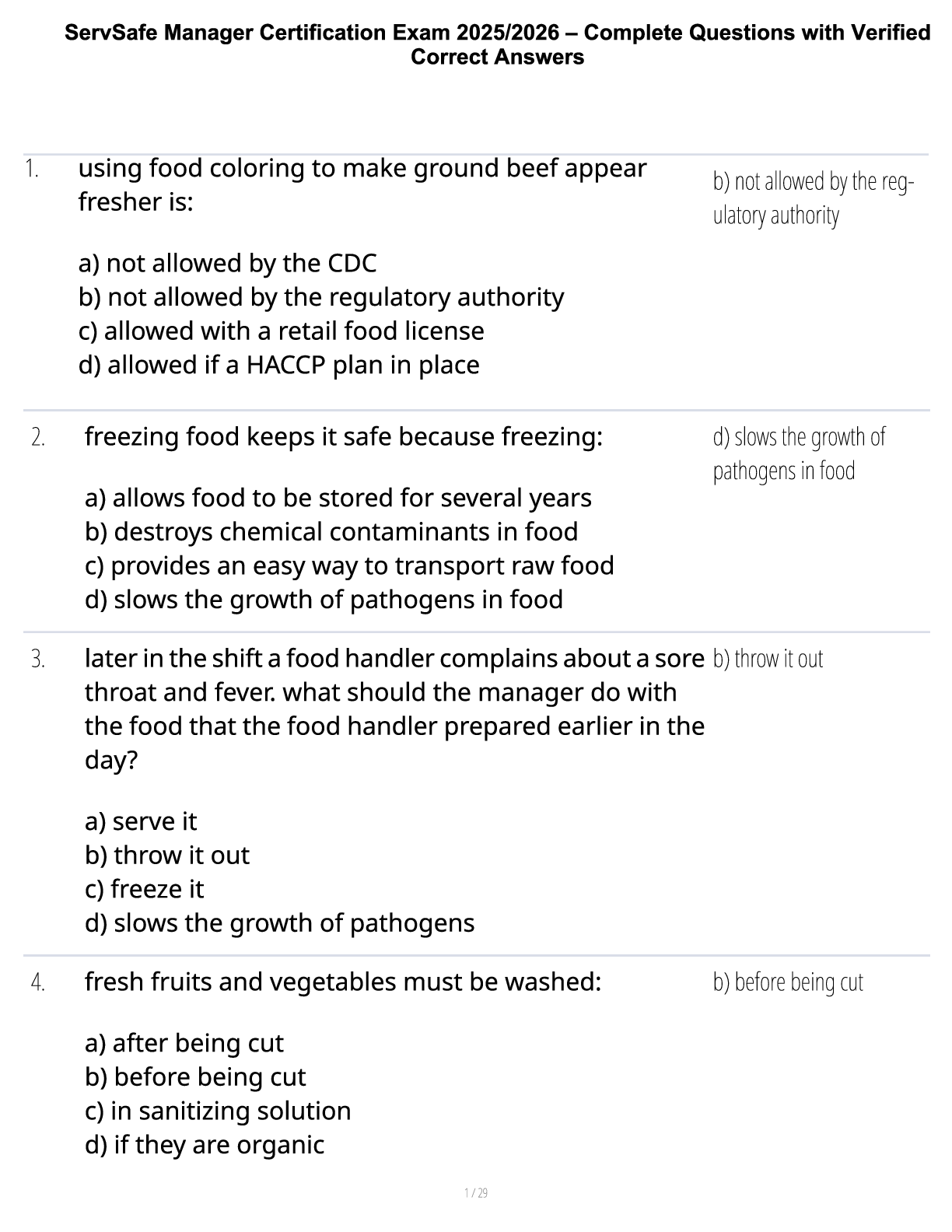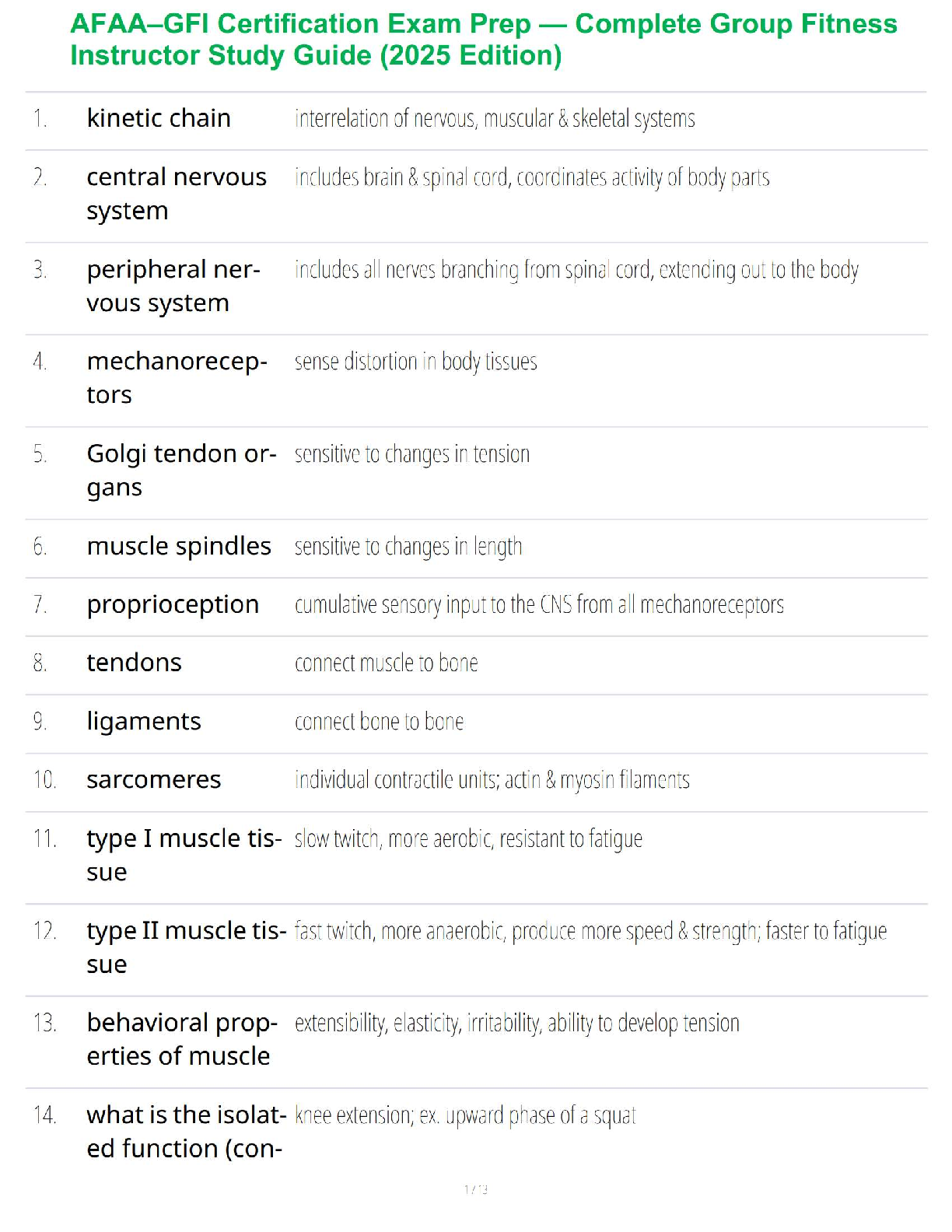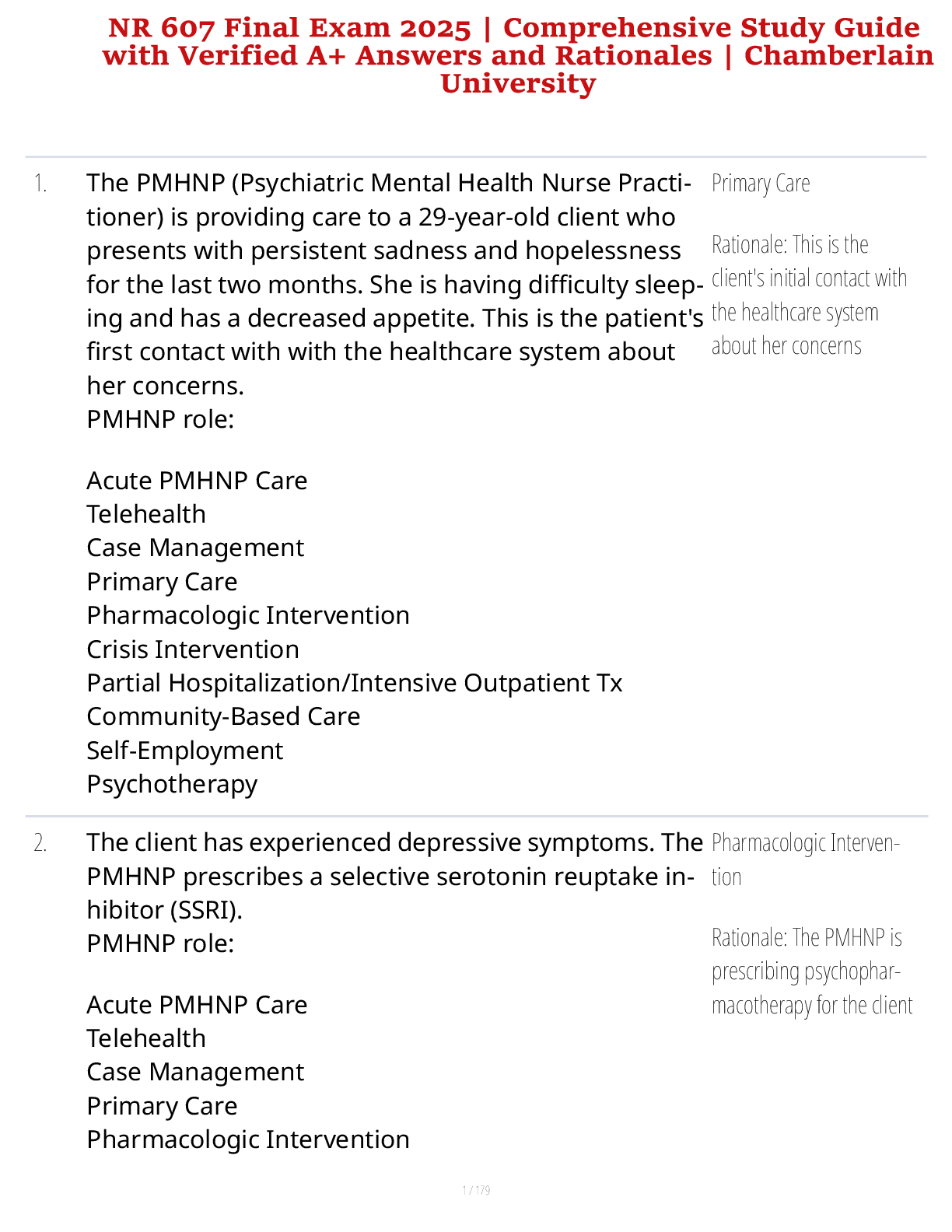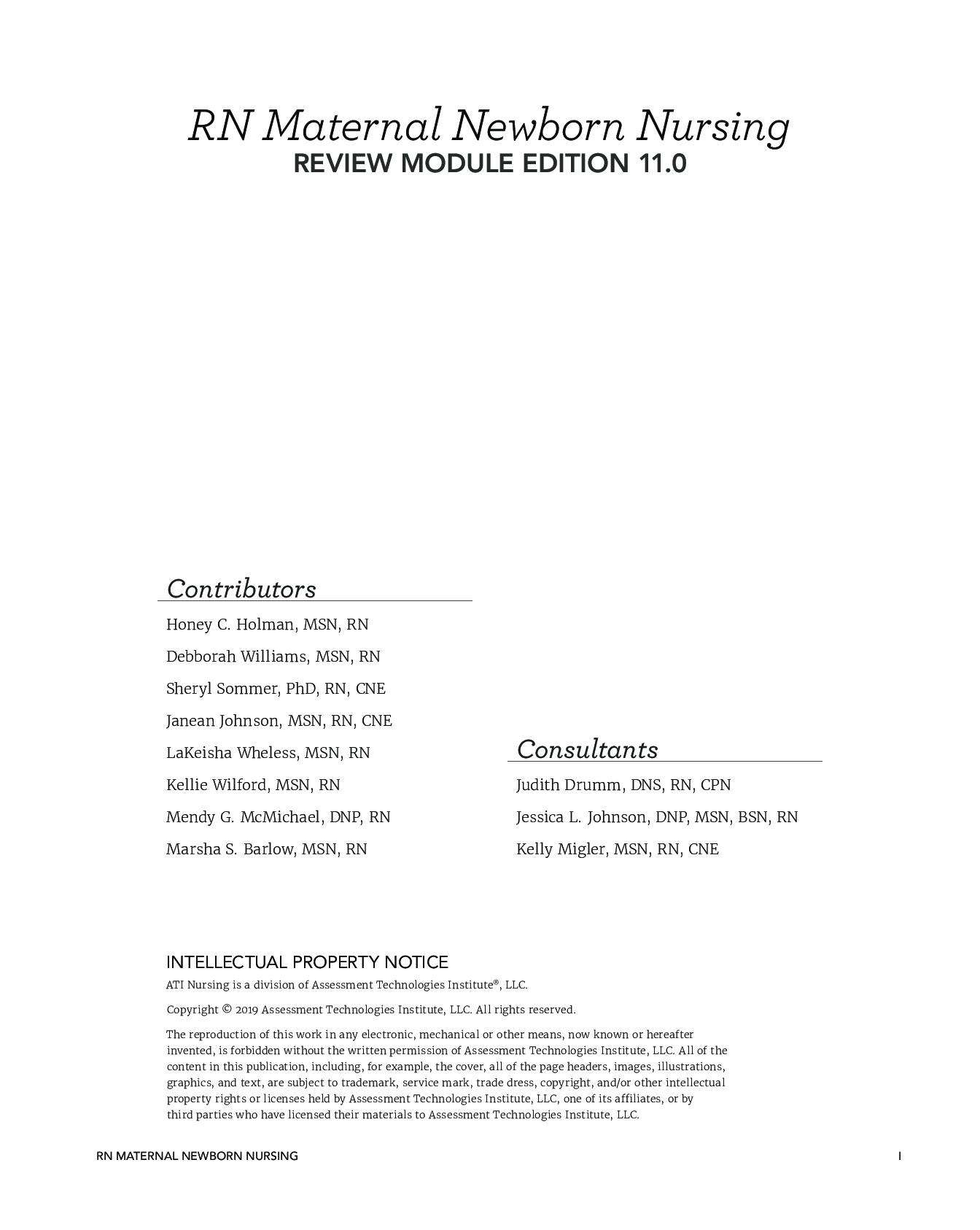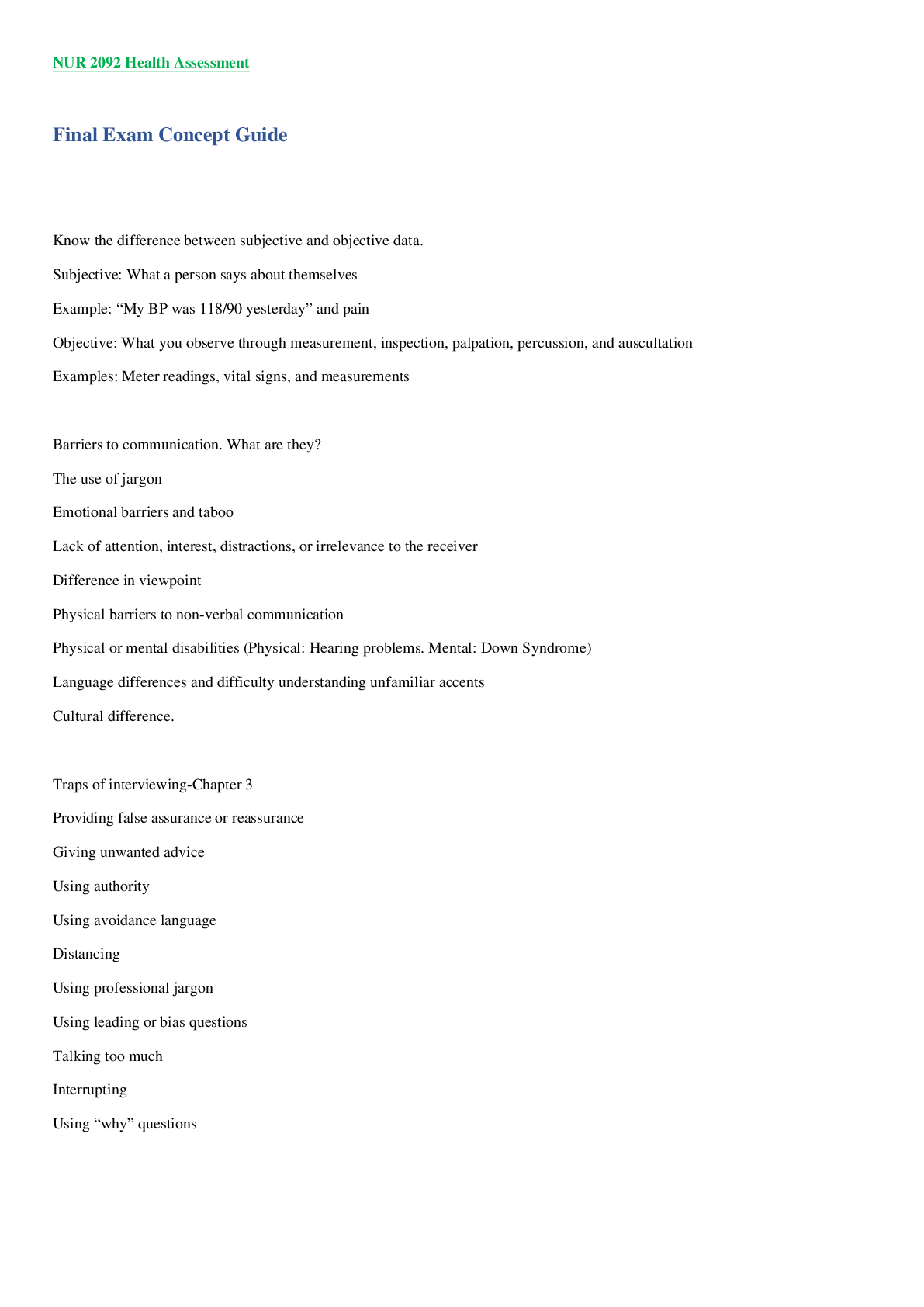Physiology > STUDY GUIDE > HHP 3114 Unit 1 Exam Study Guide | Complete Solutions (Answered) (All)
HHP 3114 Unit 1 Exam Study Guide | Complete Solutions (Answered)
Document Content and Description Below
HHP 3114 Unit 1 Exam Study Guide | Complete Solutions (Answered) Without ATP we cannot what? Function What is THE fuel for high intensity? Can we exhaust these? carbohydrates, we can exhaust these W ... hat is an endless supply of energy for us? lipids (fat) Describe lipids ATP wise big time contributor to ATP production at lower intensity Triglycerides → glycerol → fatty acid → get it into the muscle fiber → get it to the mitochondria etc etc AKA- this TAKES TIME! So not for high intensities Unlike carbohydrates, we cannot deplete our fats When talking about energy metabolism what is almost a non factor? Proteins Describe proteins ATP wise Very important in our bodies Synthesizing muscle, transporting different molecules As an energy source? It stinks! It is very dense, takes a lot or break it down to get it to ATP What is glycolysis? the breakdown of glucose by enzymes, releasing energy and pyruvic acid. Describe glycolysis 1st step in forming ATP from glucose begins with glycolysis Glucose metabolism is an essential energy source for all cells and particularly vein AND RED BLOOD CELLS GLYCOLYSIS IS A 10 STEP ANAEROBIC CATABOLIC PATHWAY THAT TAKES PLACE IN THE CYTOSOL OF THE CELLS Begins with one 6 carbon glucose molecule Ends with 2 3 carbon molecules of pyruvate and 2 net molecules of ATP Glycolysis also generators hydrogen ions Coenzyme NAD picks up hydrogen ions to form NADH NADH carries hydrogen ions and electrons to the electron transport chain True or false: lactate always means fatigue False What is the respiratory exchange ratio? Ratio between rates of CO2 production, O2 usage (telling us an estimate of how much fat contribution and how much carb contribution is taking place to help us produce ATP) 0.7 → → → → → → → →. 1.1 100% fat ("that's like dead") 100% carbs (aka exhaustion) True or false: we cannot get energy from ADP True What is creatine phosphate? The storage molecule for excess ATP energy in resting muscle Why doesn't ATP-CP system last longer thann 15-30 seconds? we ran out of phosphate What is the ATP-CP system? It is very anaerobic, 15-30 seconds long At the end of anaerobic glycolysis what is the primary end product? 2 molecules of lactic acid At the end of aerobic glycolysis what is the primary end product? 2 molecules of pyruvate At the end of glycolysis (doesn't matter which one) how much ATP do we get? 2 NET molecules of ATP 4 GROSS molecules of ATP 2 NADH Where does glycolysis happen? sacroplasam of the muscle cell We now are transitioning from sarcoplasm to the mitochondria This is where oxygenated ATP production takes place We get 2 Pyruvates (or lactates) Where is glucose stored? liver and muscles Pyruvate needs to become what in the intermediate step? Acetyl CoA Describe briefly the intermediate step This conversion the phosphate is not broken free so no ATP Hydrogen is broken off! we deal with this by having NAD binding to it which = NADH Remember there are 2 NADH (net production) because there are 2 pyruvates! Net production of ATP in this cycle = 0 Describe briefly the Krebs Cycle We are now in the MITOCHONDRIA Remember we have 2 Acetyl CoA! In 1 turn- 3 NADH, 1 ATP, FADH come from 1 Acetyl CoA FAD functions exactly like NAD as it picks up a Hydrogen So now we have 6 NADH 2 ATP and 2 FADH Describe briefly the electron transport chain For each NADH that enters into the Electron Transport Chain we get 3 ATP Take one NADH and drop the electrons Now there are 3 ATPs made What about FADH? 2 ATPs made ("they show up late to the ETC") Hydrogens accumulate, oxygen binds!- this makes WATER! What is the stored form of glucose called? Glycogen The rate limiting enzyme in glycolysis is what? Phosphofructokinase or PFK What is the rate limiting enzyme in the Krebs cycle? Isocitrate dehydrogenase or IDH What is metabolism? sum of all chemical reactions in the body What is the difference between anabolic reactions and catabolic reactions? Anabolic reactions use energy to build complex molecules from simpler organic compounds (e.g., proteins from amino acids, carbohydrates from sugars, fats from fatty acids and glycerol); catabolic reactions break complex molecules down into simpler ones, releasing chemical energy What does the nucleus contain? Contains genes that regulate protein synthesis What does the cytoplasm contain? Organelles What is oxidation? Loss of electrons, gain of oxygen What is reduction? gain of electrons, loss of oxygen Oxidation and reduction are always ______ reactions Coupled What do NAD and FAD do? transfer hydrogen from one molecule to another during bioenergetic reactions What are enzymes? Proteins that speed up chemical reactions What are factors that regulate enzyme activity? temperature and pH Describe all of the classifications of enzymes Kinases •Add a phosphate group Dehydrogenases •Remove hydrogen atoms (you see these in the Krebs cycle) Oxidases •Catalyze oxidation-reduction reactions involving oxygen Isomerases Rearrangement of the structure of molecules What is the difference between glucose and glycogen? Whereas glucose is found in your blood, glycogen is found mainly in your liver and muscle cells. Glucose is the basic unit of fuel for your cells, while glycogen is a collection of many glucose molecules, stored for future use. Describe each of the fuels for exercise-fats Fatty acids •Primary type of fat used by skeletal muscle Triglycerides •Storage form of fat in muscle and adipose tissue •Broken down into glycerol and fatty acids via lipolysis Phospholipids •Not used as an energy source Steroids •Derived from cholesterol-not an energy source •Needed to synthesize sex hormones Proteins are composed of ______? amino acids What is glucogenesis? The reverse of glycolysis to produce glucose. True or false: Anaerobic pathways are high intensity and you get lactate at the end True NADH produced in glycolysis must be converted to _____? NAD GTP from the Krebs cycle translates into what? ONE ATP What is the process that entails fatty acids converting to Acetyl CoA? Beta-Oxidation What are free radicals? unstable oxygen-containing molecules that can damage the cells of the body and possibly contribute to the increased risk of chronic diseases Exercise promotes the production of _____________ in the working muscles free radicals What element stimulates aerobic ATP production? Calcium Where does energy to perform exercise come from? comes from an interaction between aerobic and anaerobic pathways Almost 100% of ATP is produced by _______ metabolism Aerobic When does ATP production reach a steady state? within 1-4 minutes ATP production increases immediately and _______ uptake increases rapidly Oxygen What does the time course of VO2 consumption at beginning of exercise tell us about bioenergetic pathways used in the muscle? •The observation that VO2 rises slowly at beginning of exercise indicates that both anaerobic and aerobic bioenergetic pathways are active to produced the needed ATP [Show More]
Last updated: 1 year ago
Preview 4 out of 11 pages

Loading document previews ...
Buy this document to get the full access instantly
Instant Download Access after purchase
Buy NowInstant download
We Accept:

Also available in bundle (1)
Click Below to Access Bundle(s)
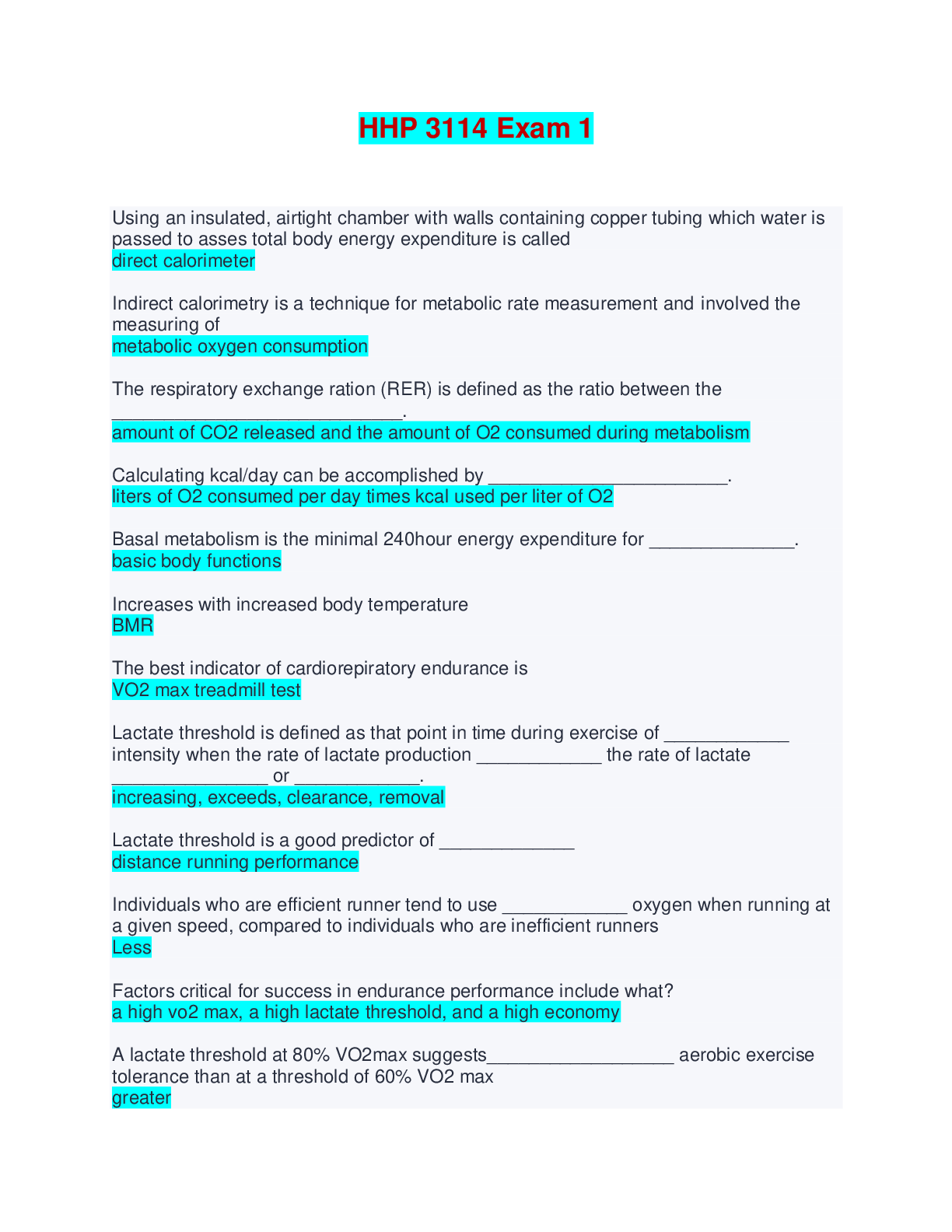
HHP 3114 EXAM 1 - 3 AND UNIT 1 STUDY GUIDE BUNDLE
HHP 3114 EXAM 1 - 3 AND UNIT 1 STUDY GUIDE BUNDLE
By Ajay25 1 year ago
$21.5
4
Reviews( 0 )
$13.00
Can't find what you want? Try our AI powered Search
Document information
Connected school, study & course
About the document
Uploaded On
Sep 13, 2024
Number of pages
11
Written in
All
Additional information
This document has been written for:
Uploaded
Sep 13, 2024
Downloads
0
Views
51


